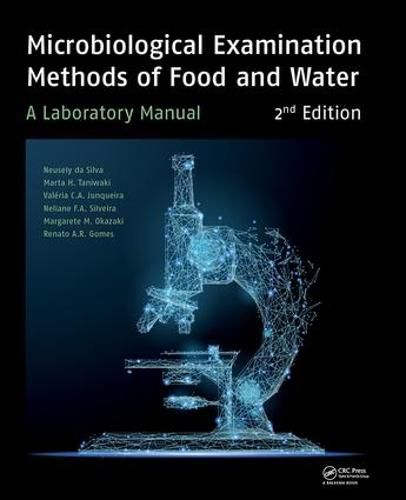Readings Newsletter
Become a Readings Member to make your shopping experience even easier.
Sign in or sign up for free!
You’re not far away from qualifying for FREE standard shipping within Australia
You’ve qualified for FREE standard shipping within Australia
The cart is loading…






Microbiological Examination Methods of Food and Water (2nd edition) is an illustrated laboratory manual that provides an overview of current standard microbiological culture methods for the examination of food and water, adhered to by renowned international organizations, such as ISO, AOAC, APHA, FDA and FSIS/USDA. It includes methods for the enumeration of indicator microorganisms of general contamination, indicators of hygiene and sanitary conditions, sporeforming, spoilage fungi and pathogenic bacteria.
Every chapter begins with a comprehensive, in-depth and updated bibliographic reference on the microorganism(s) dealt with in that particular section of the book. The latest facts on the taxonomic position of each group, genus or species are given, as well as clear guidelines on how to deal with changes in nomenclature on the internet. All chapters provide schematic comparisons between the methods presented, highlighting the main differences and similarities. This allows the user to choose the method that best meets his/her needs. Moreover, each chapter lists validated alternative quick methods, which, though not described in the book, may and can be used for the analysis of the microorganism(s) dealt with in that particular chapter. The didactic setup and the visualization of procedures in step-by-step schemes allow the user to quickly perceive and execute the procedure intended. Support material such as drawings, procedure schemes and laboratory sheets are available for downloading and customization.
This compendium will serve as an up-to-date practical companion for laboratory professionals, technicians and research scientists, instructors, teachers and food and water analysts. Alimentary engineering, chemistry, biotechnology and biology (under)graduate students specializing in food sciences will also find the book beneficial. It is furthermore suited for use as a practical/laboratory manual for graduate courses in Food Engineering and Food Microbiology.
$9.00 standard shipping within Australia
FREE standard shipping within Australia for orders over $100.00
Express & International shipping calculated at checkout
Microbiological Examination Methods of Food and Water (2nd edition) is an illustrated laboratory manual that provides an overview of current standard microbiological culture methods for the examination of food and water, adhered to by renowned international organizations, such as ISO, AOAC, APHA, FDA and FSIS/USDA. It includes methods for the enumeration of indicator microorganisms of general contamination, indicators of hygiene and sanitary conditions, sporeforming, spoilage fungi and pathogenic bacteria.
Every chapter begins with a comprehensive, in-depth and updated bibliographic reference on the microorganism(s) dealt with in that particular section of the book. The latest facts on the taxonomic position of each group, genus or species are given, as well as clear guidelines on how to deal with changes in nomenclature on the internet. All chapters provide schematic comparisons between the methods presented, highlighting the main differences and similarities. This allows the user to choose the method that best meets his/her needs. Moreover, each chapter lists validated alternative quick methods, which, though not described in the book, may and can be used for the analysis of the microorganism(s) dealt with in that particular chapter. The didactic setup and the visualization of procedures in step-by-step schemes allow the user to quickly perceive and execute the procedure intended. Support material such as drawings, procedure schemes and laboratory sheets are available for downloading and customization.
This compendium will serve as an up-to-date practical companion for laboratory professionals, technicians and research scientists, instructors, teachers and food and water analysts. Alimentary engineering, chemistry, biotechnology and biology (under)graduate students specializing in food sciences will also find the book beneficial. It is furthermore suited for use as a practical/laboratory manual for graduate courses in Food Engineering and Food Microbiology.